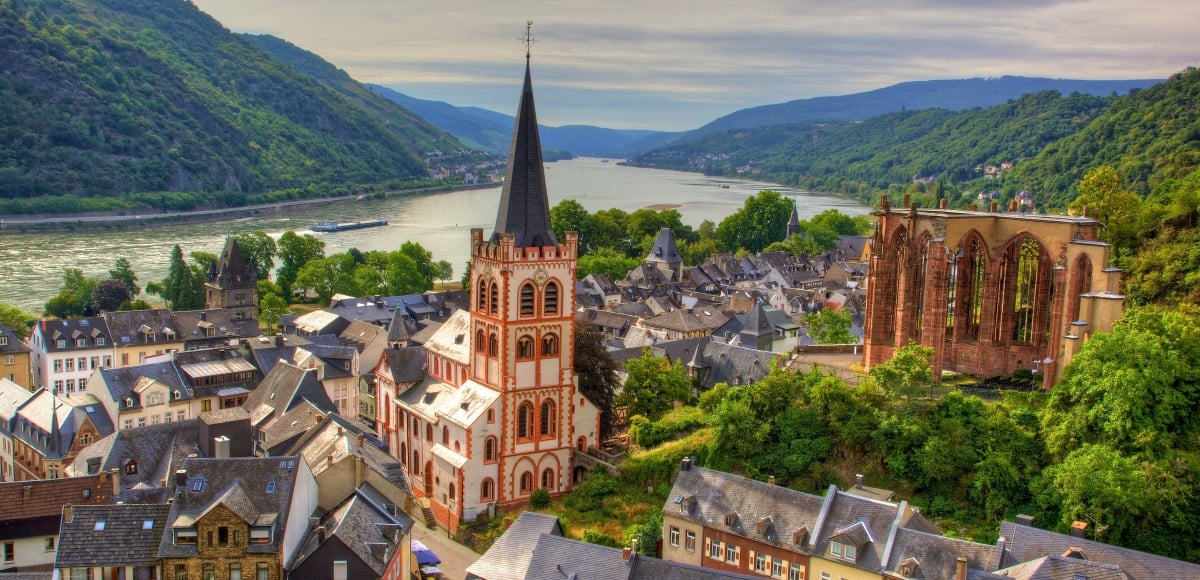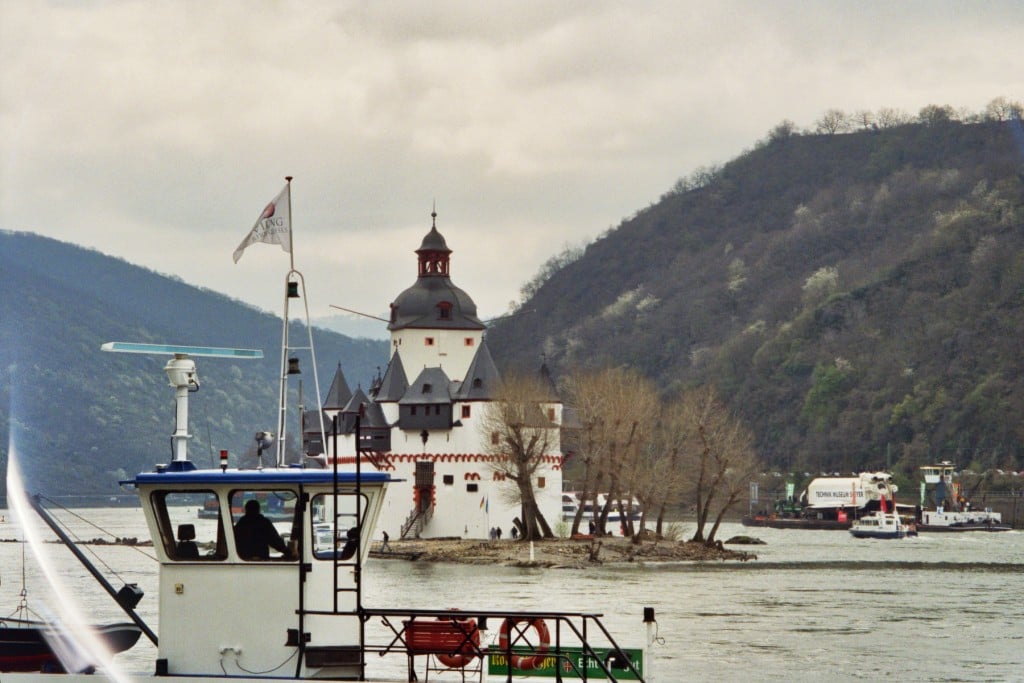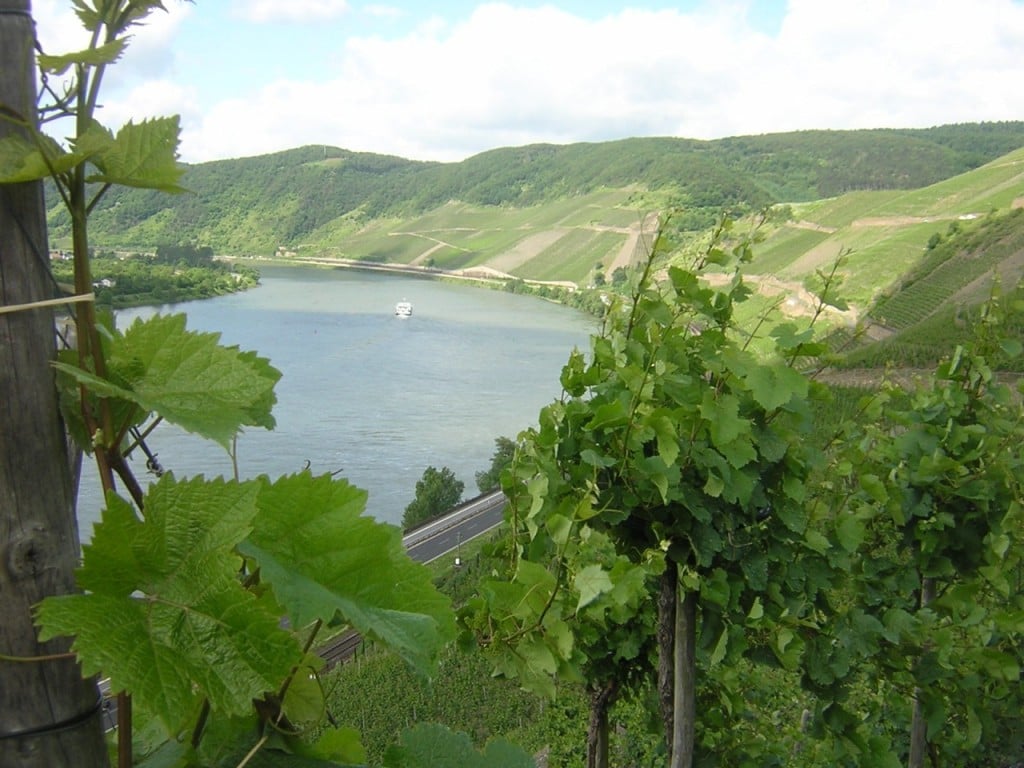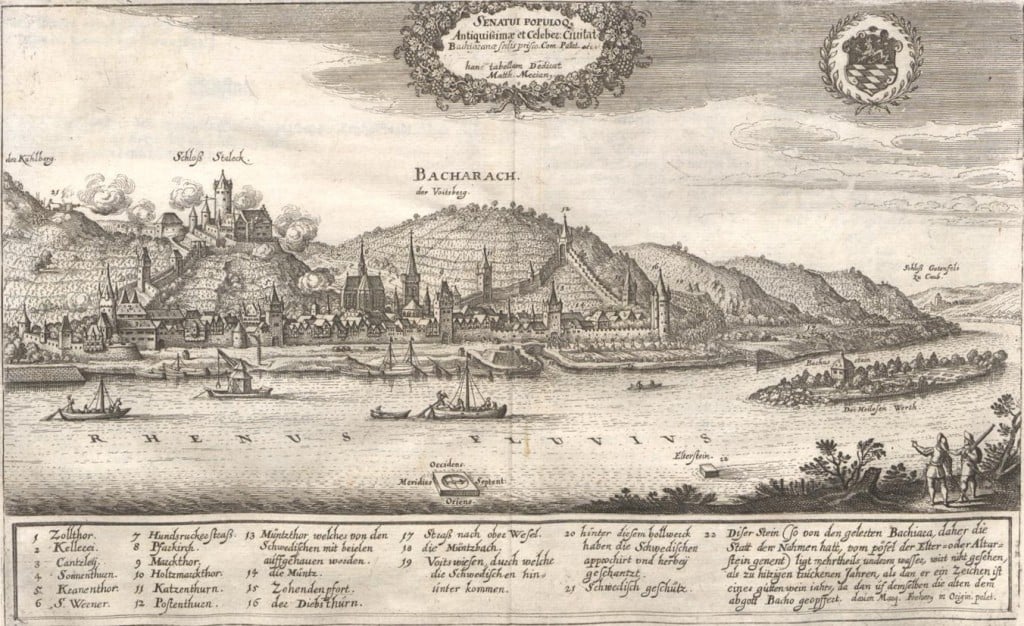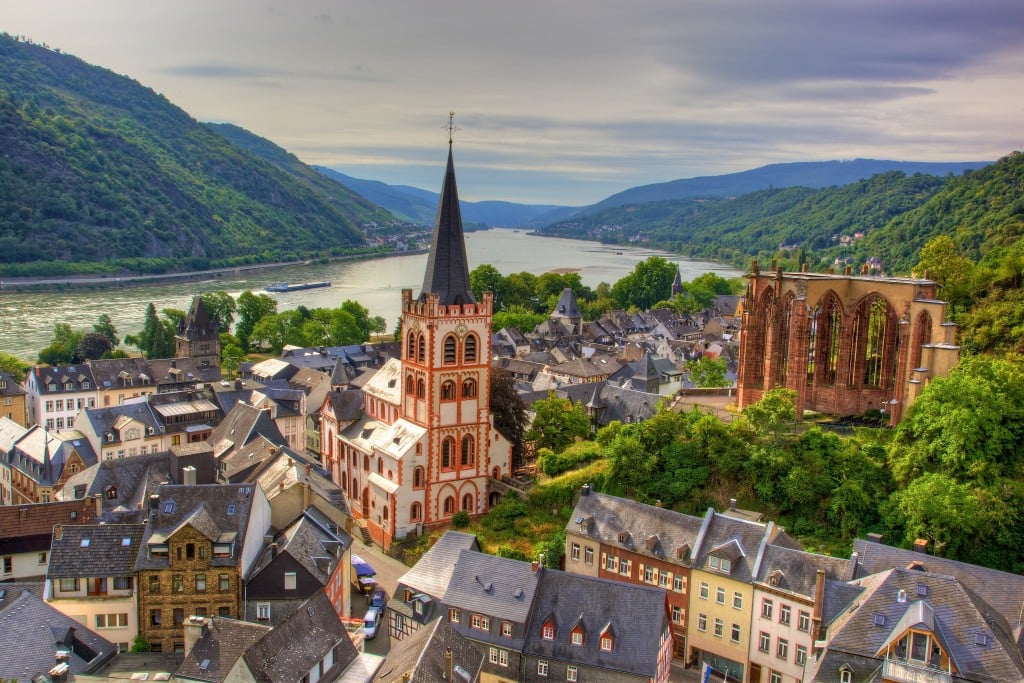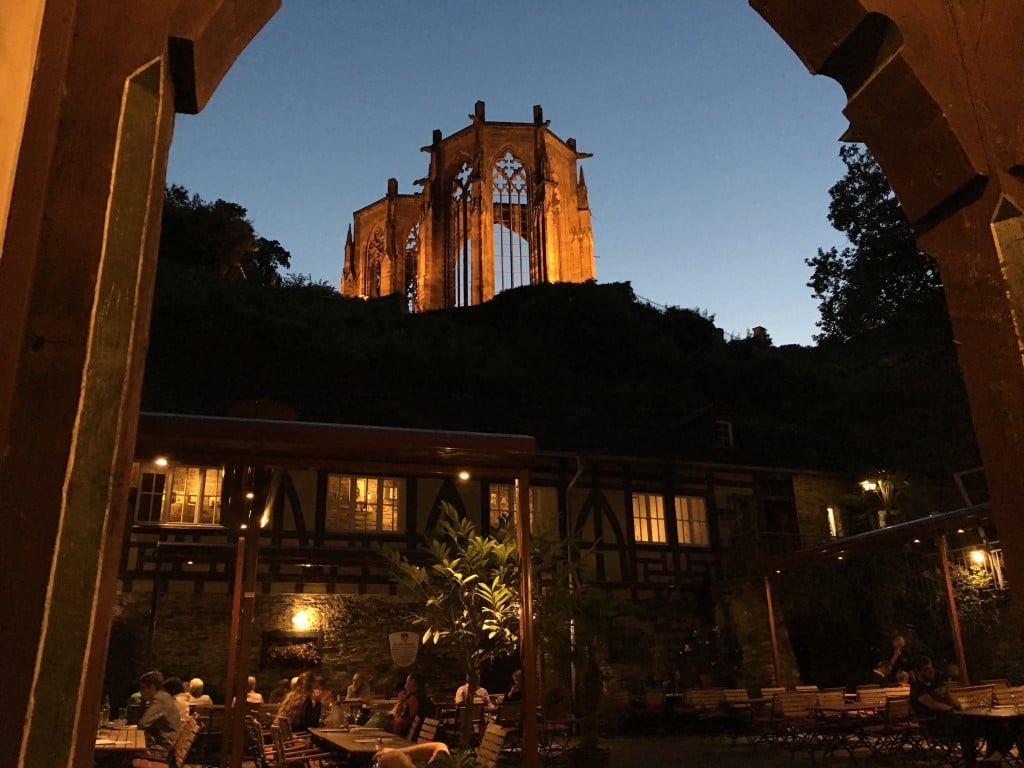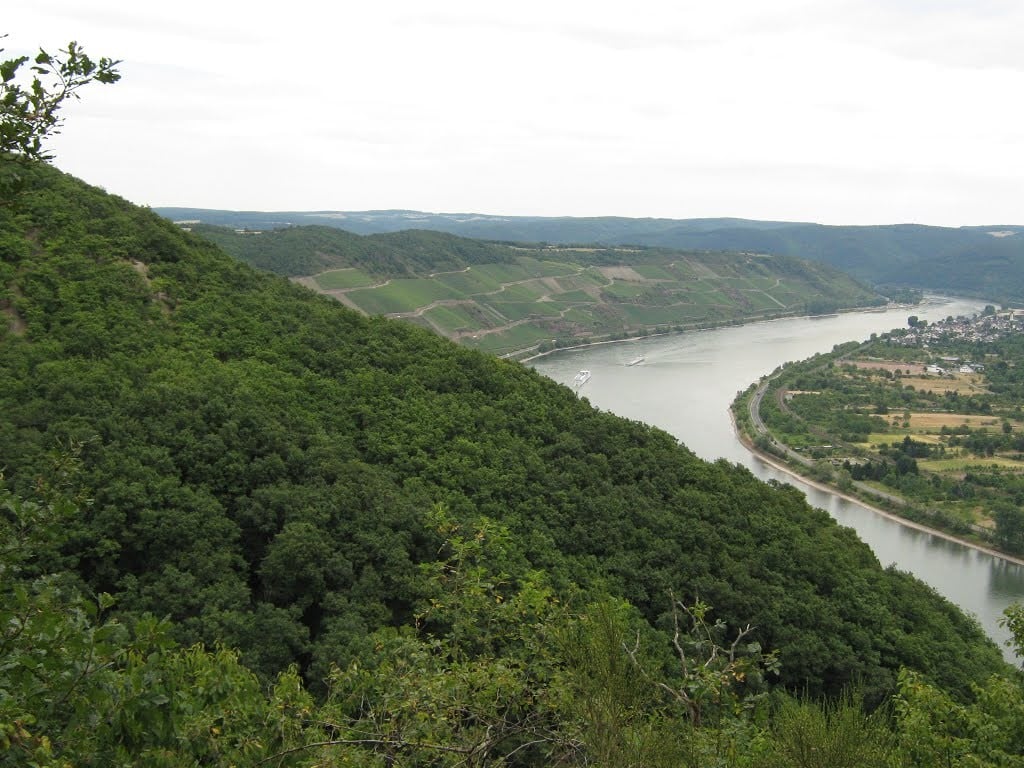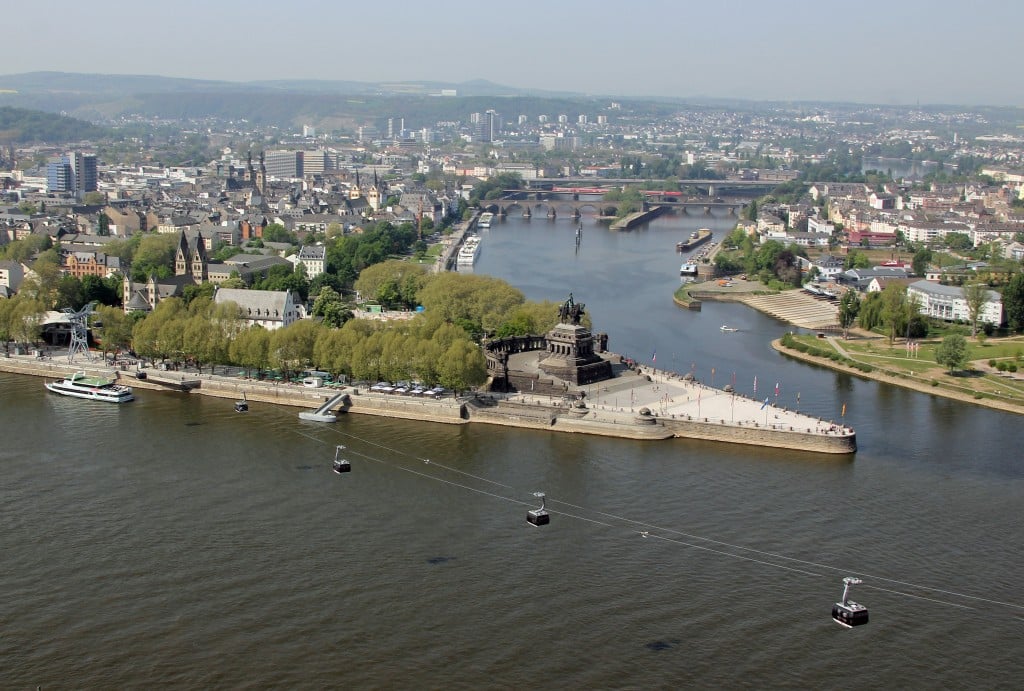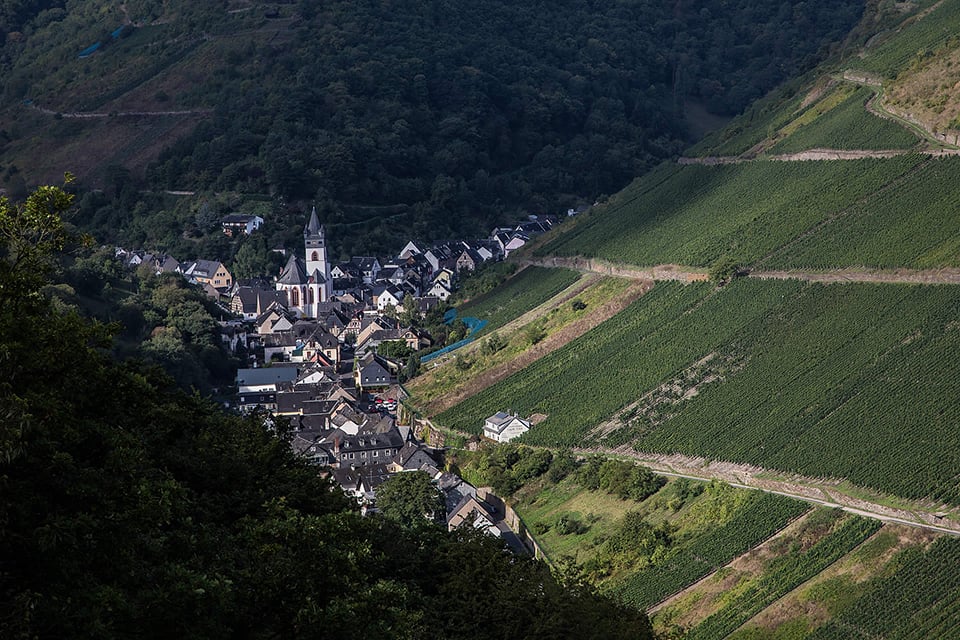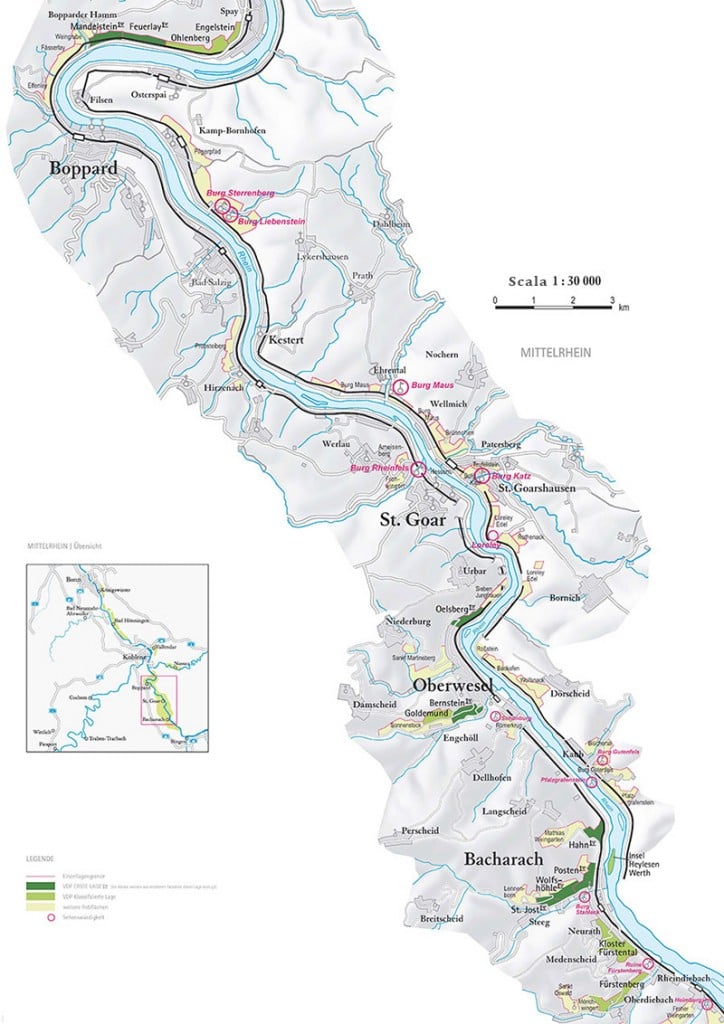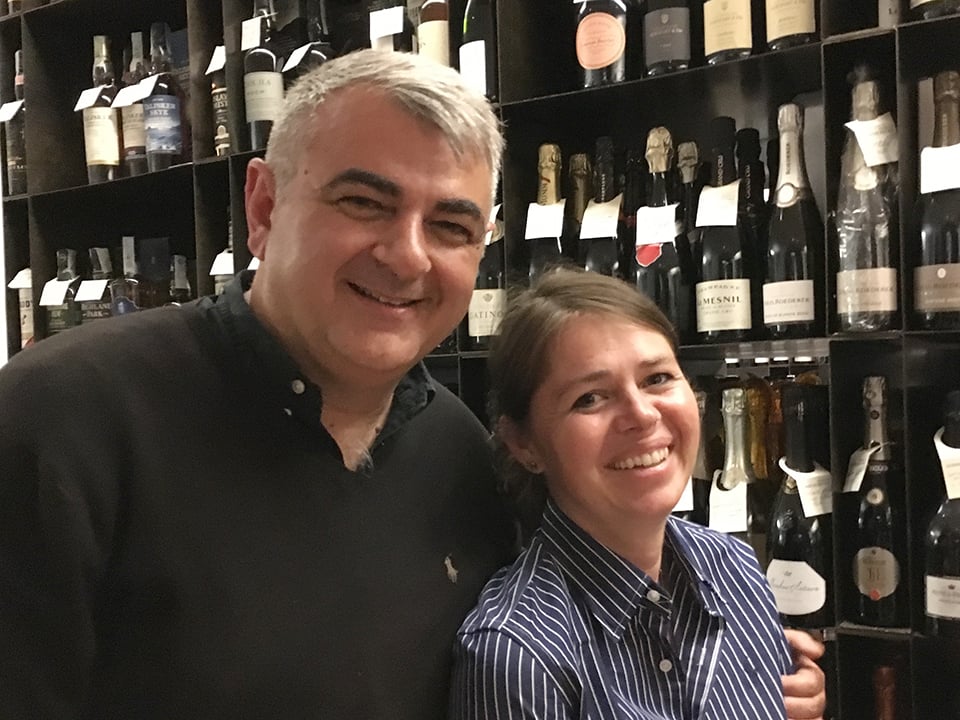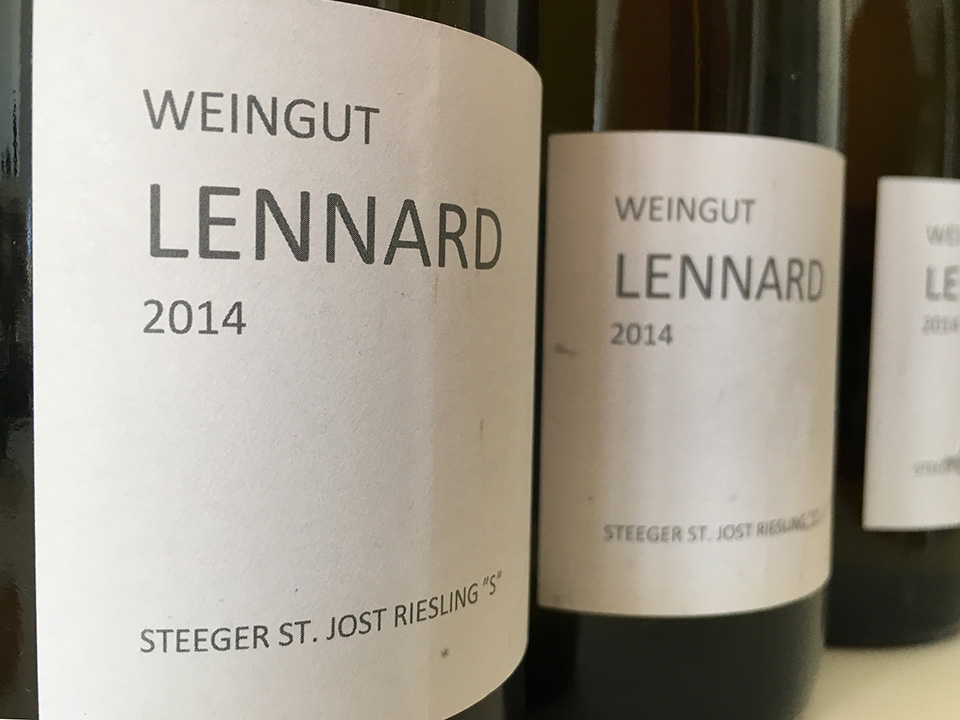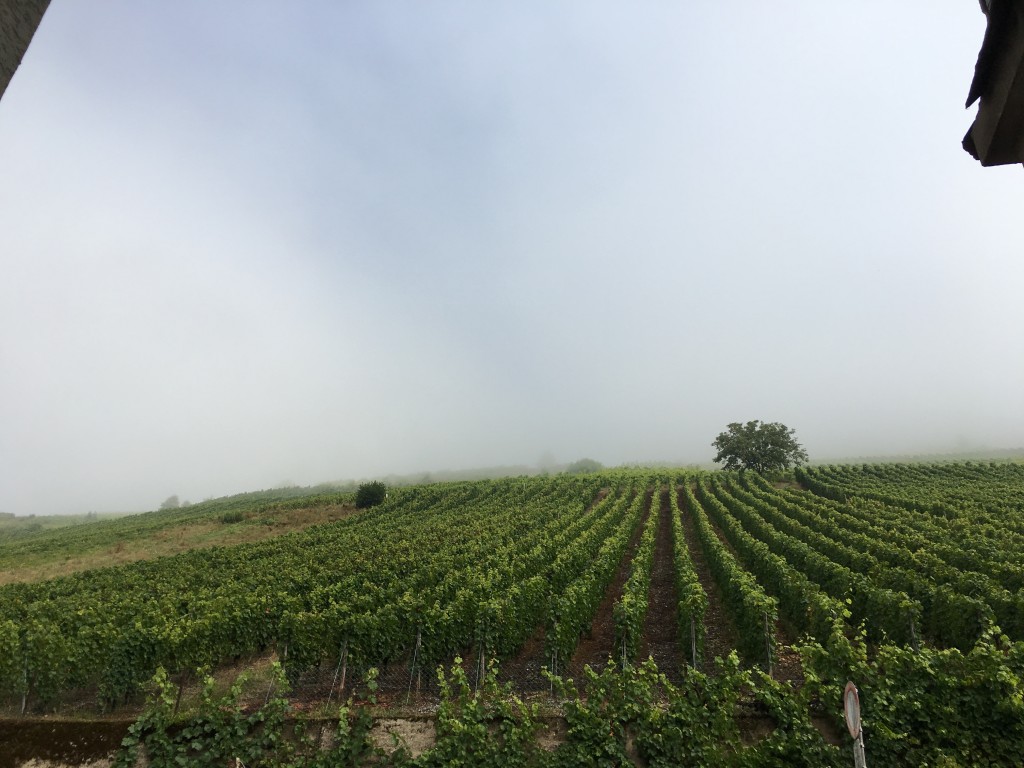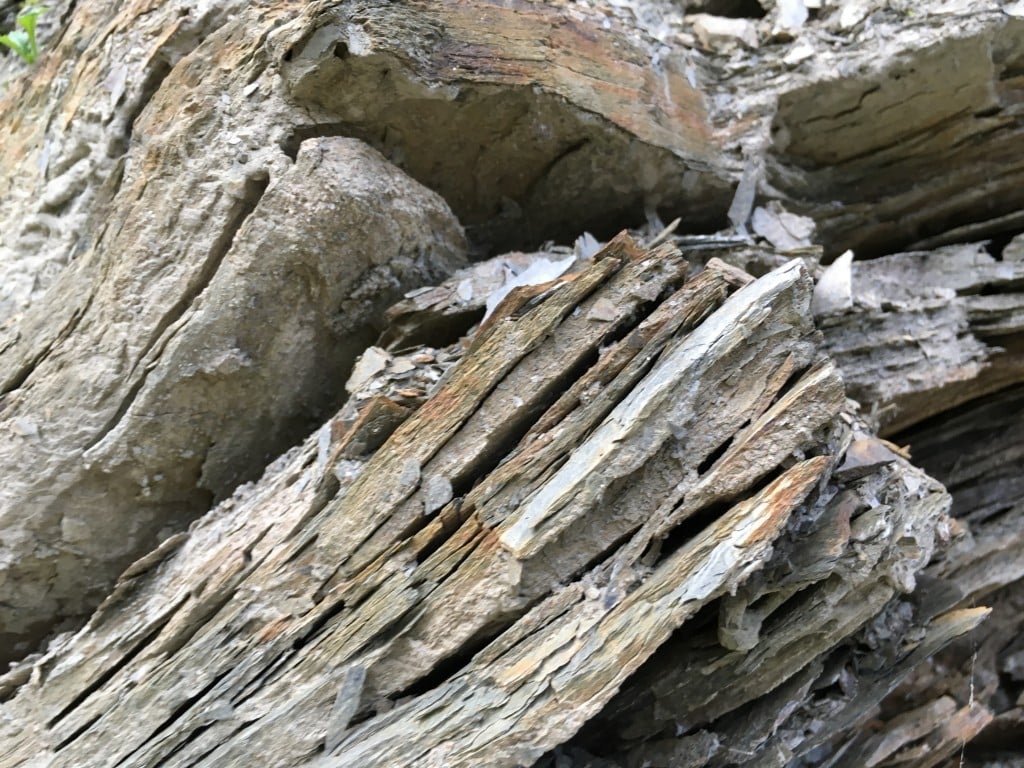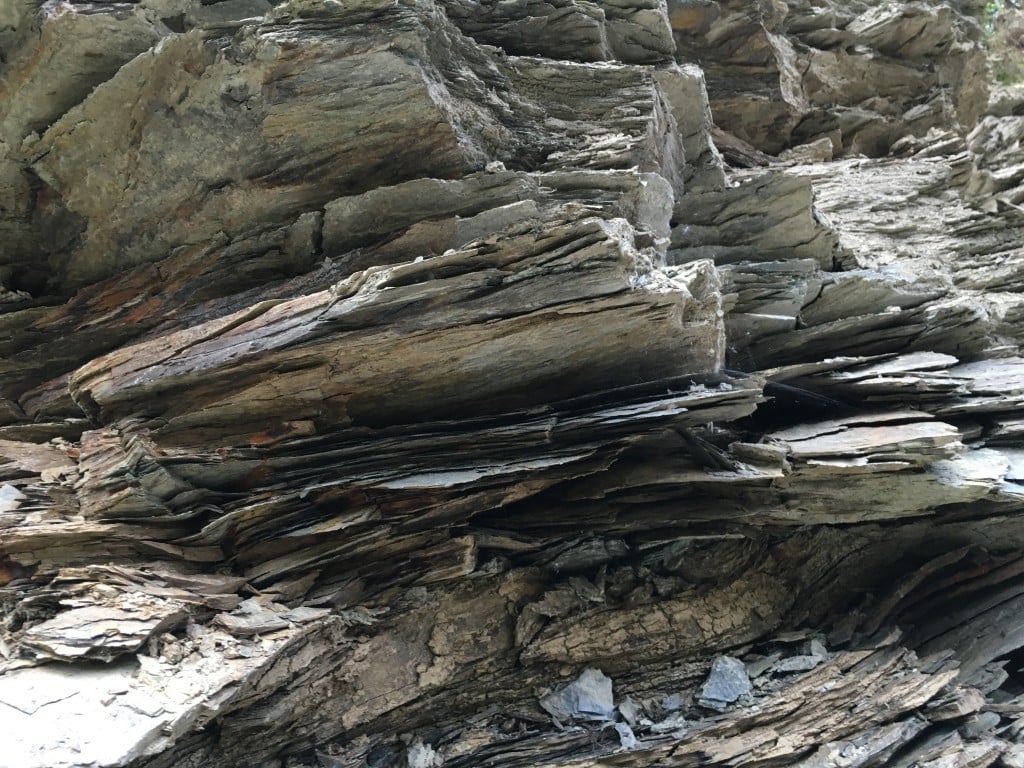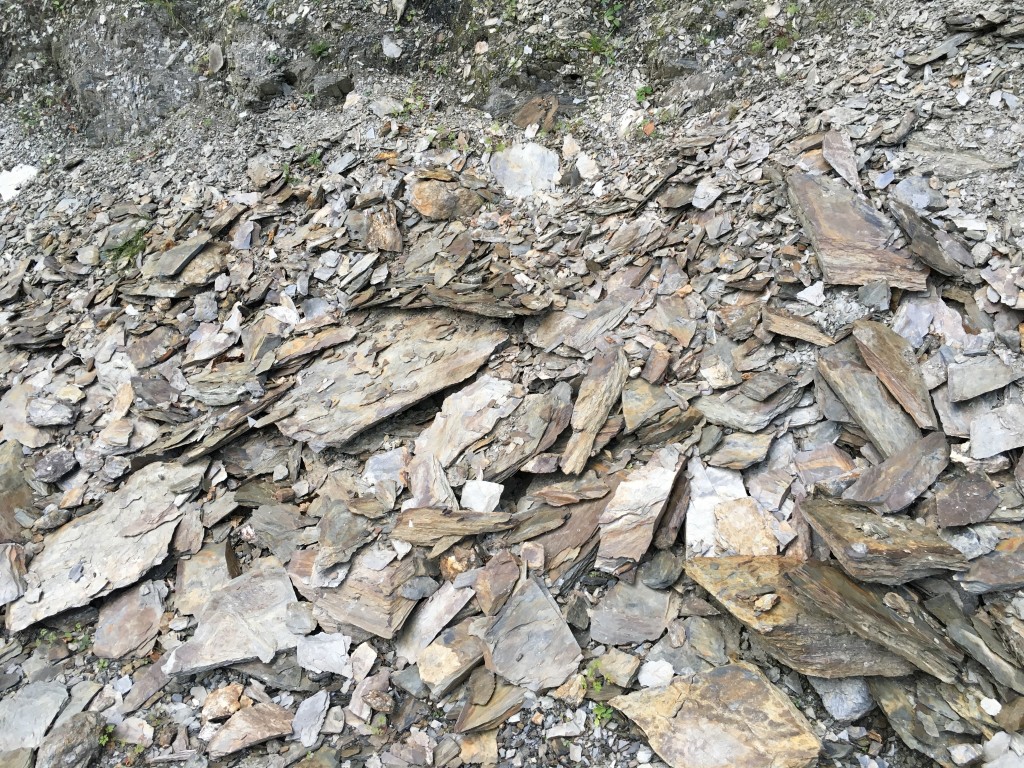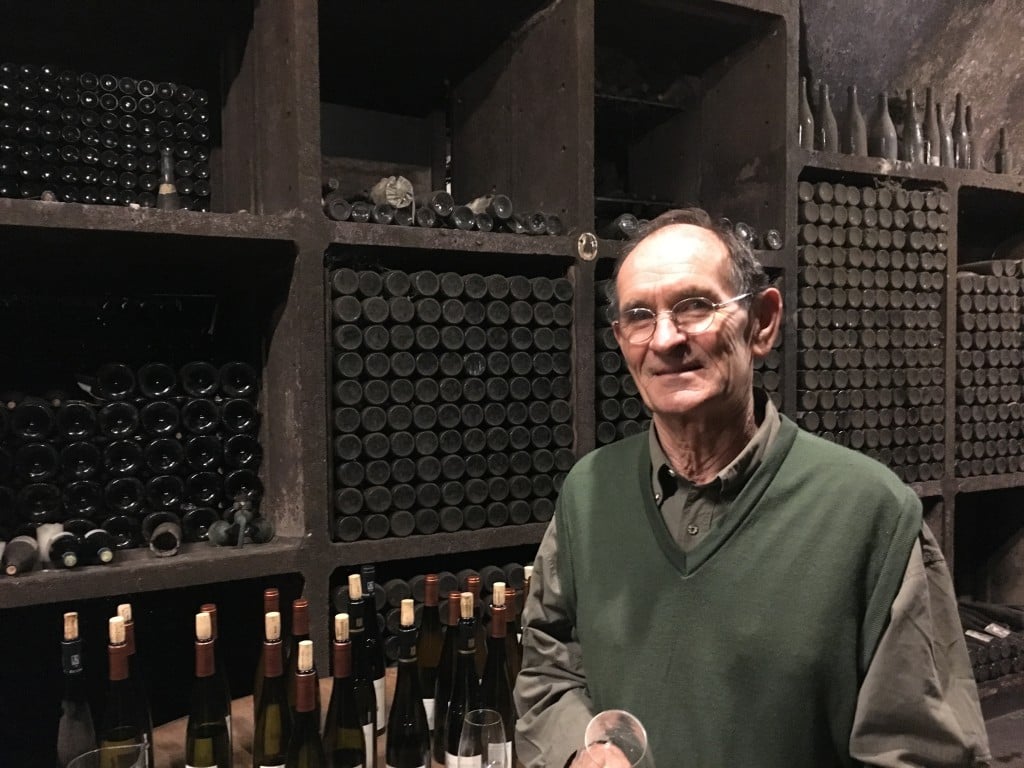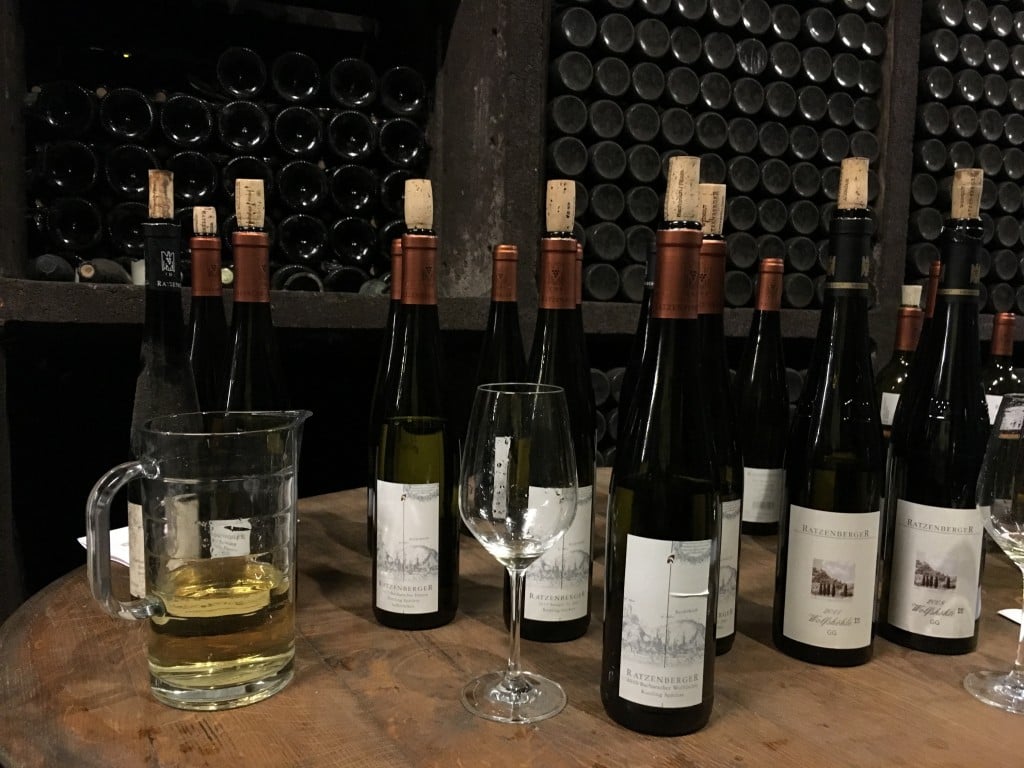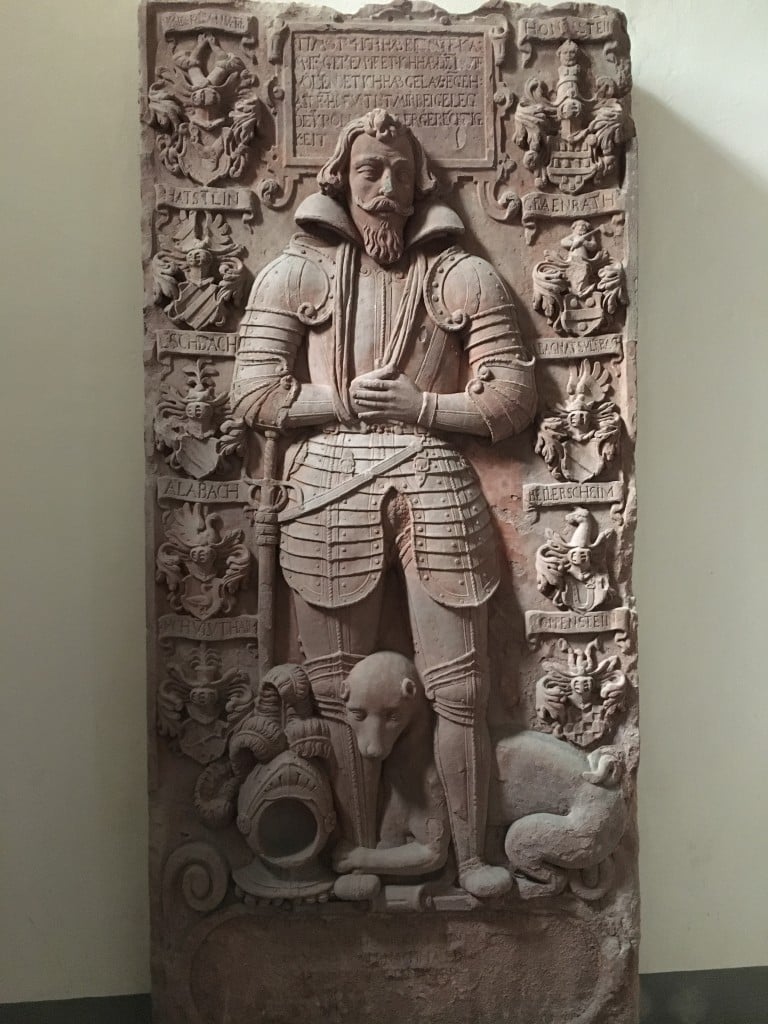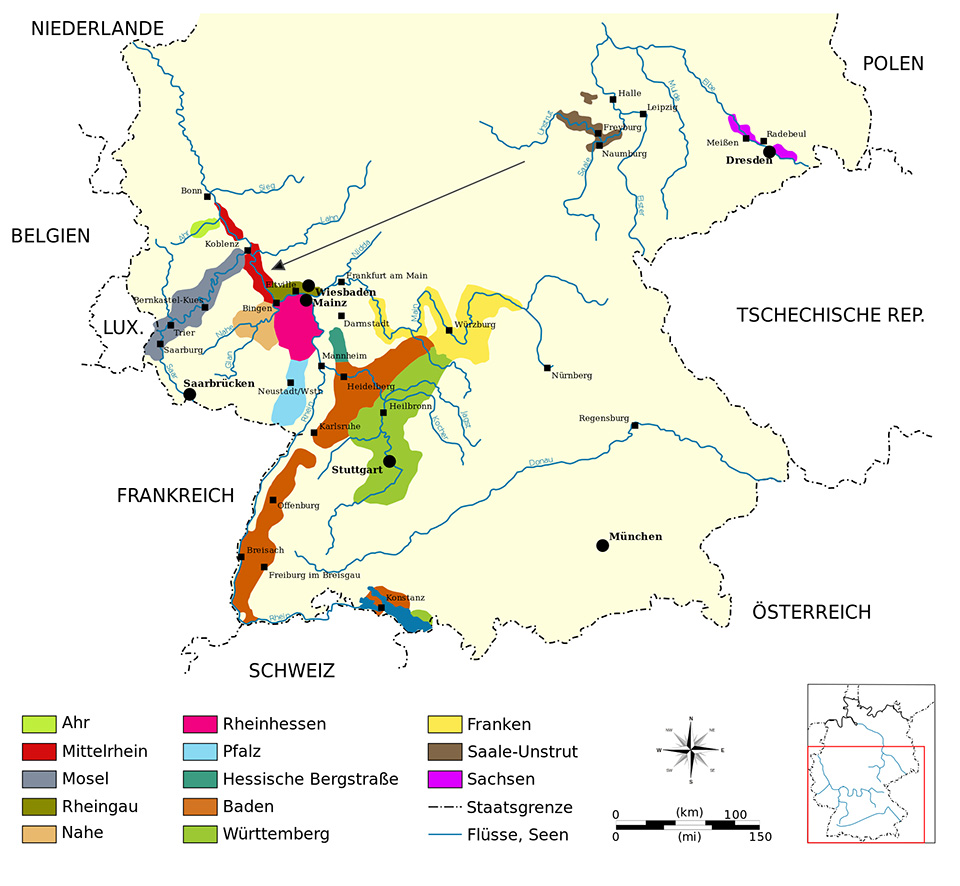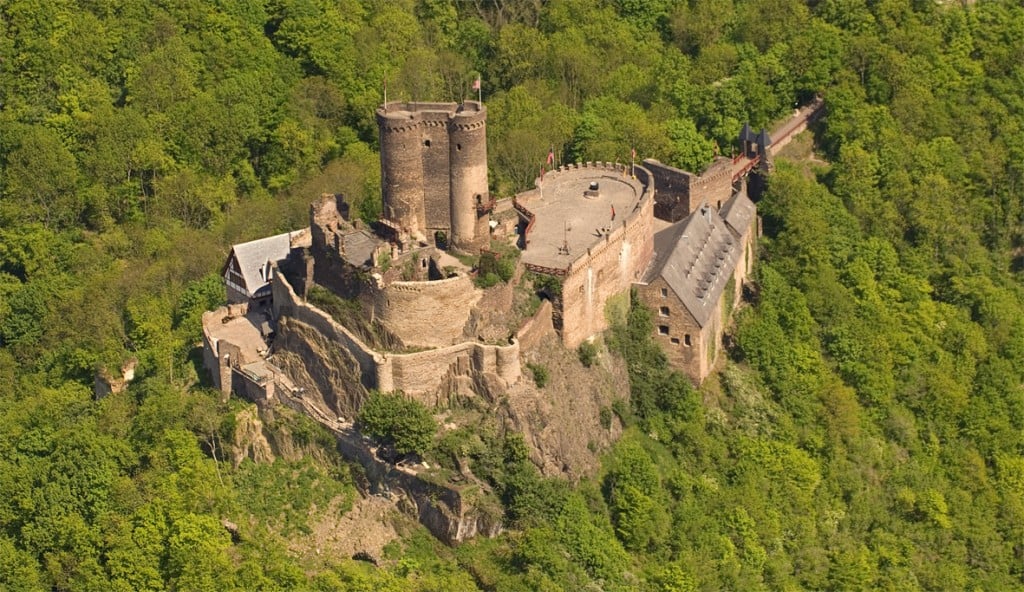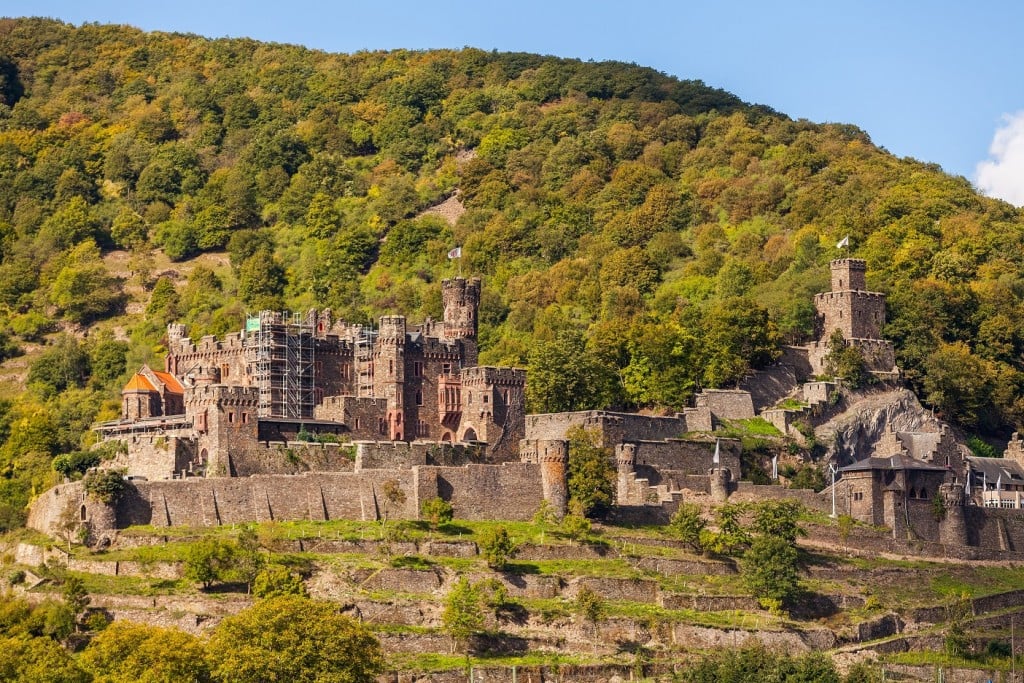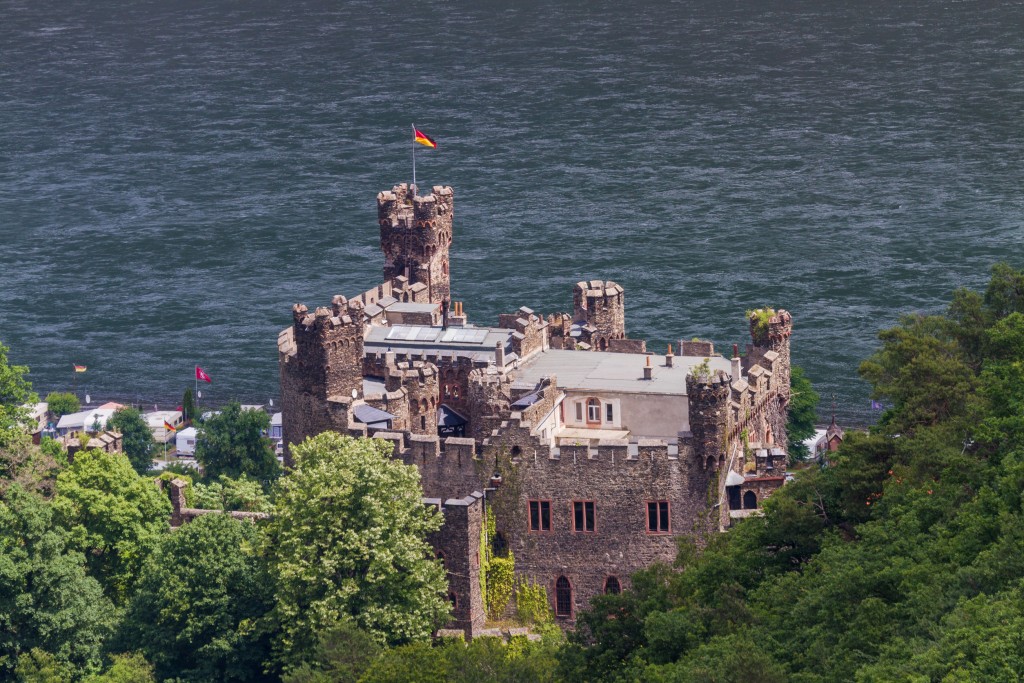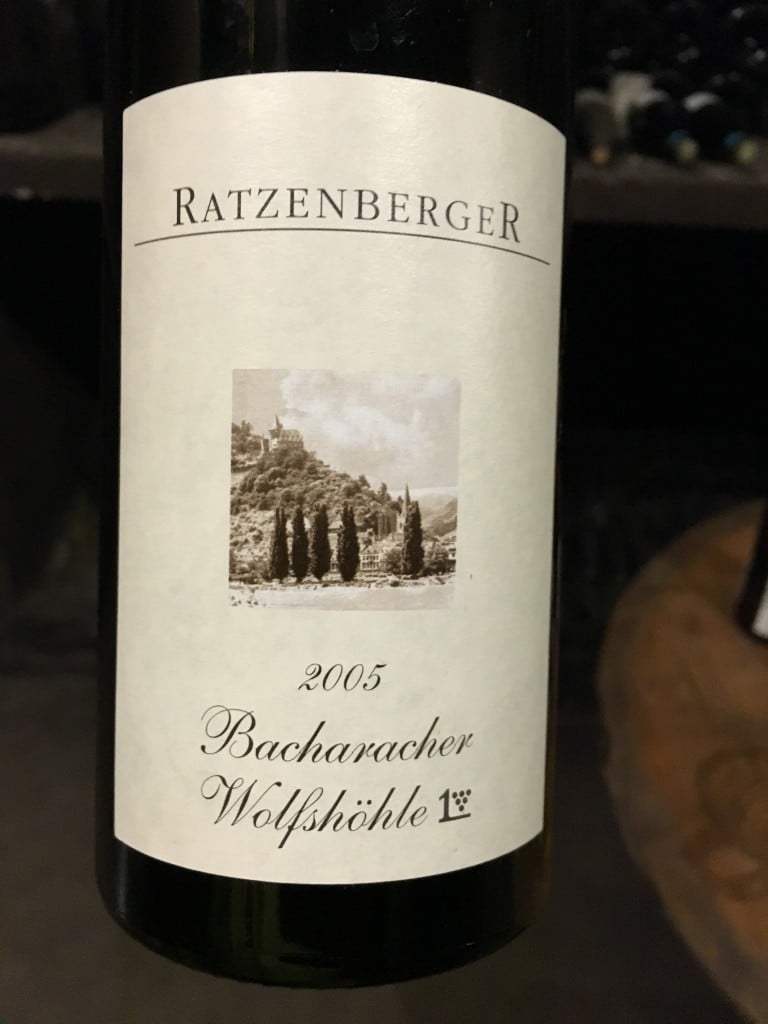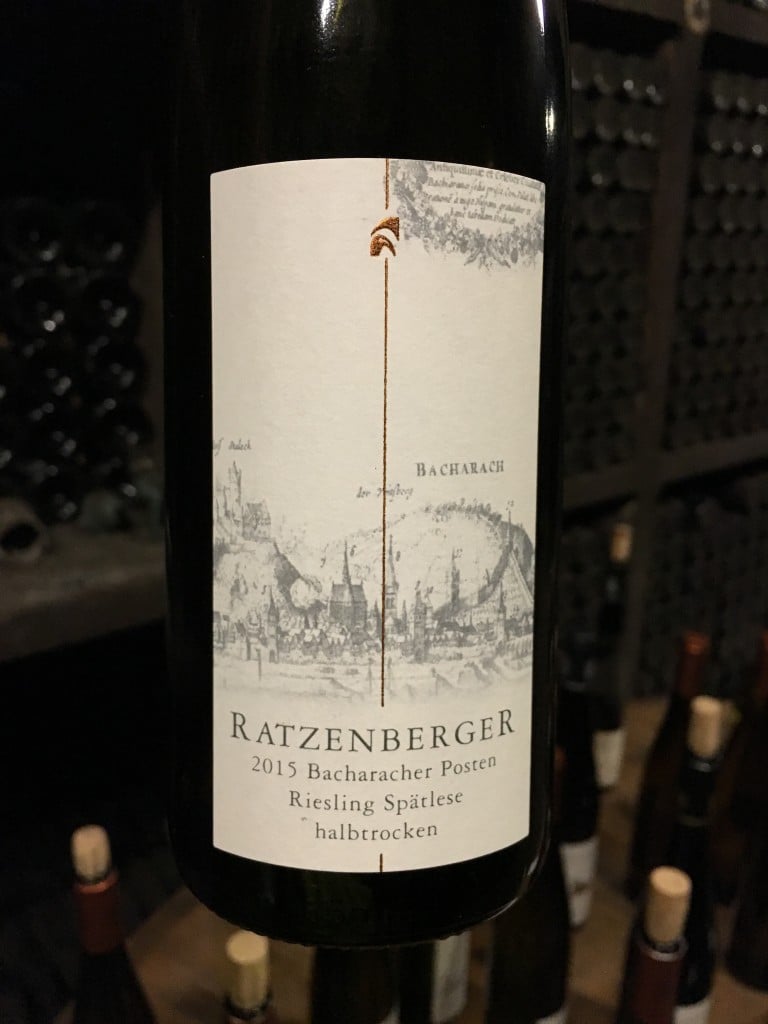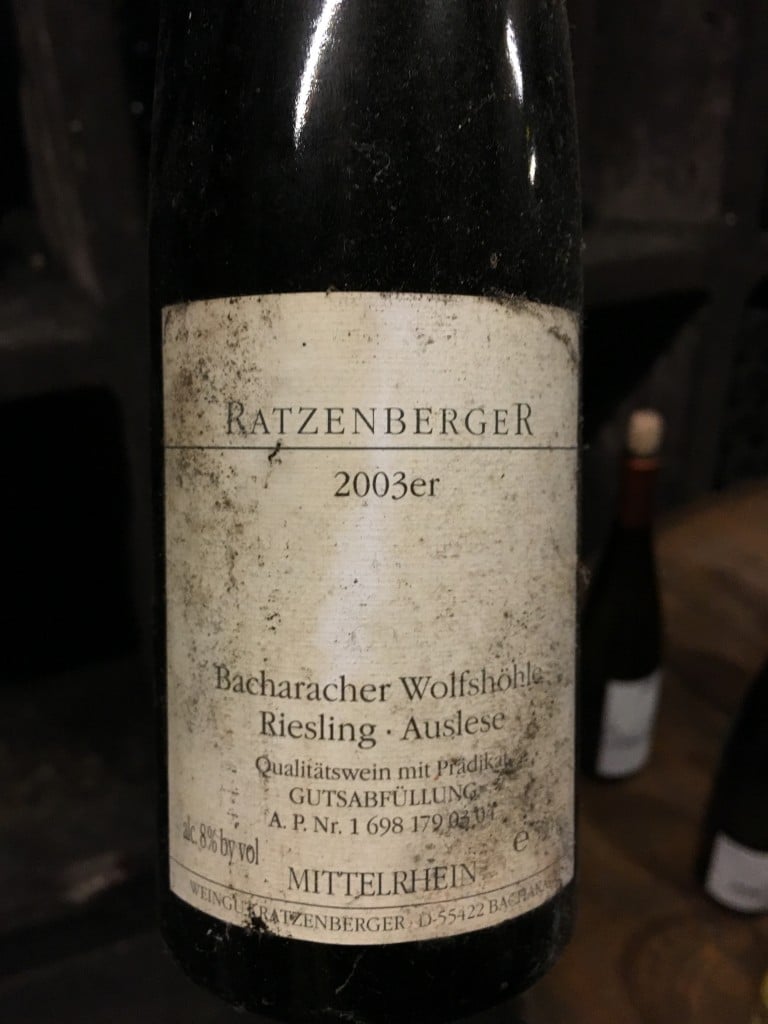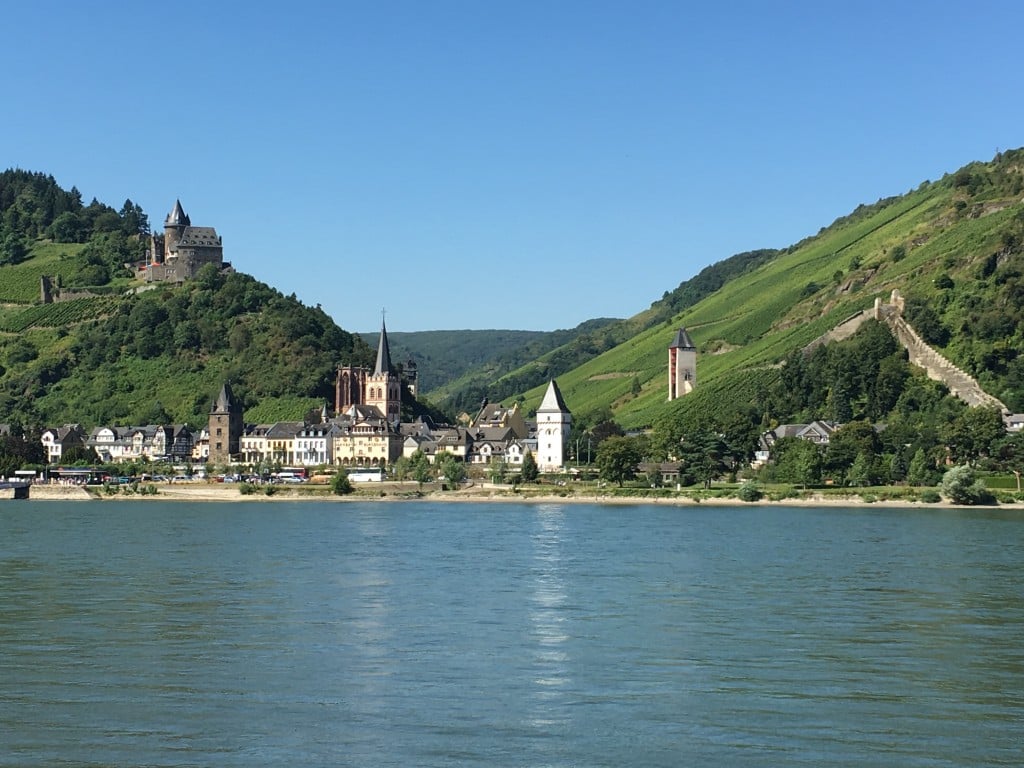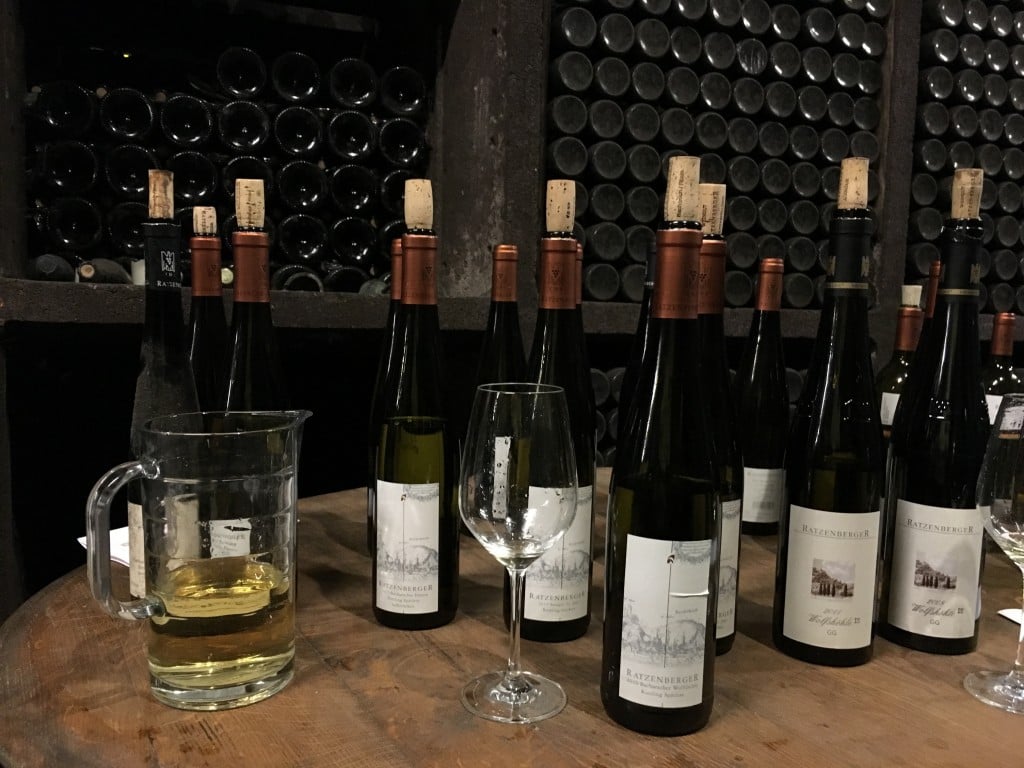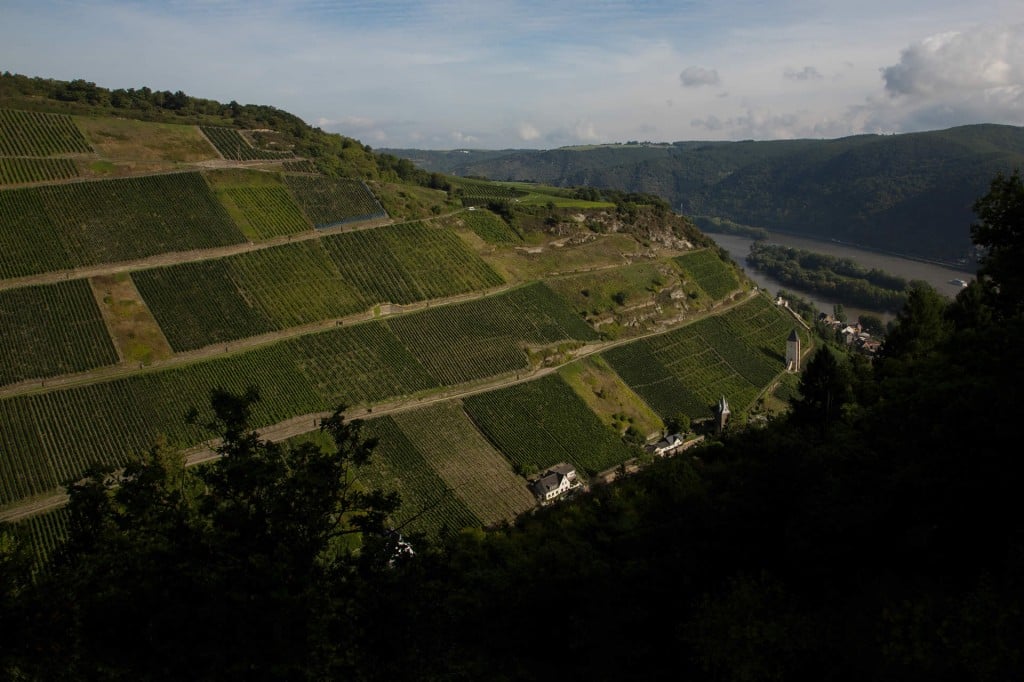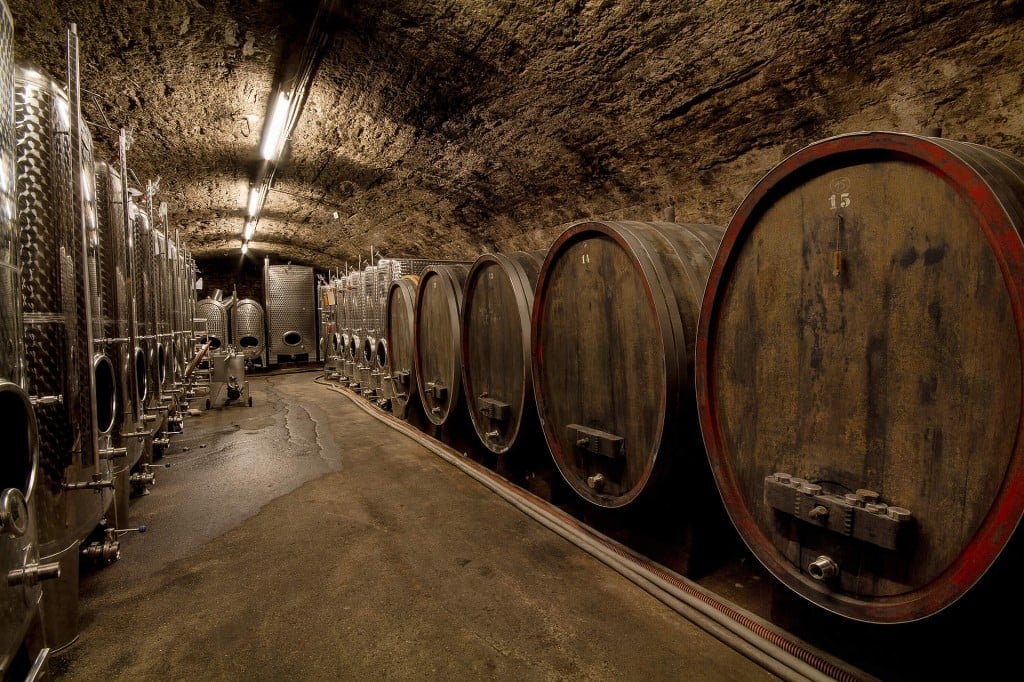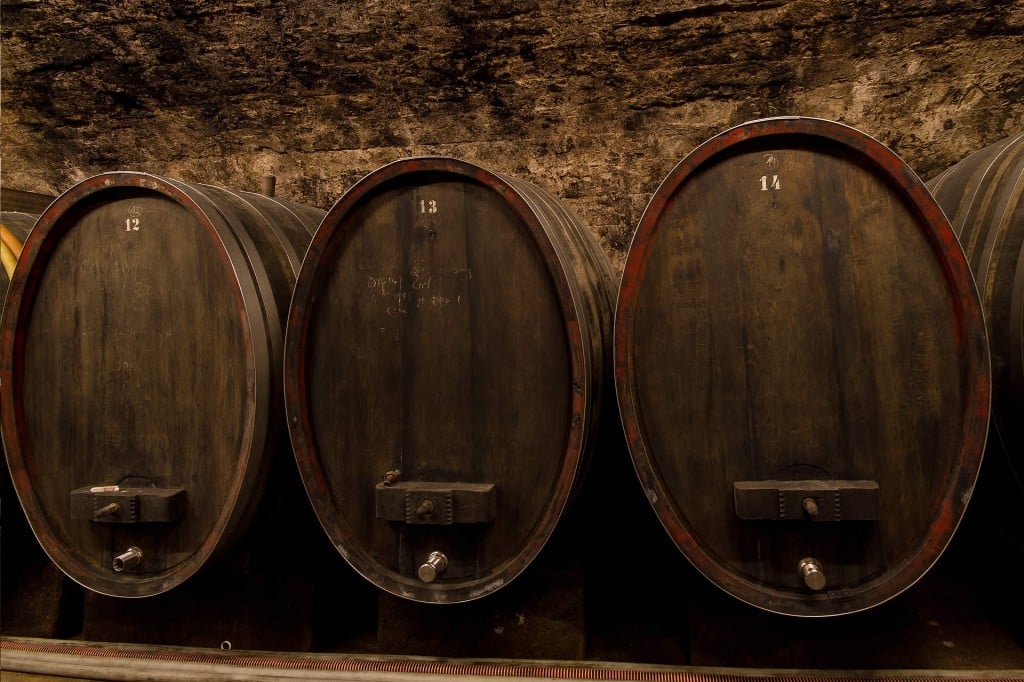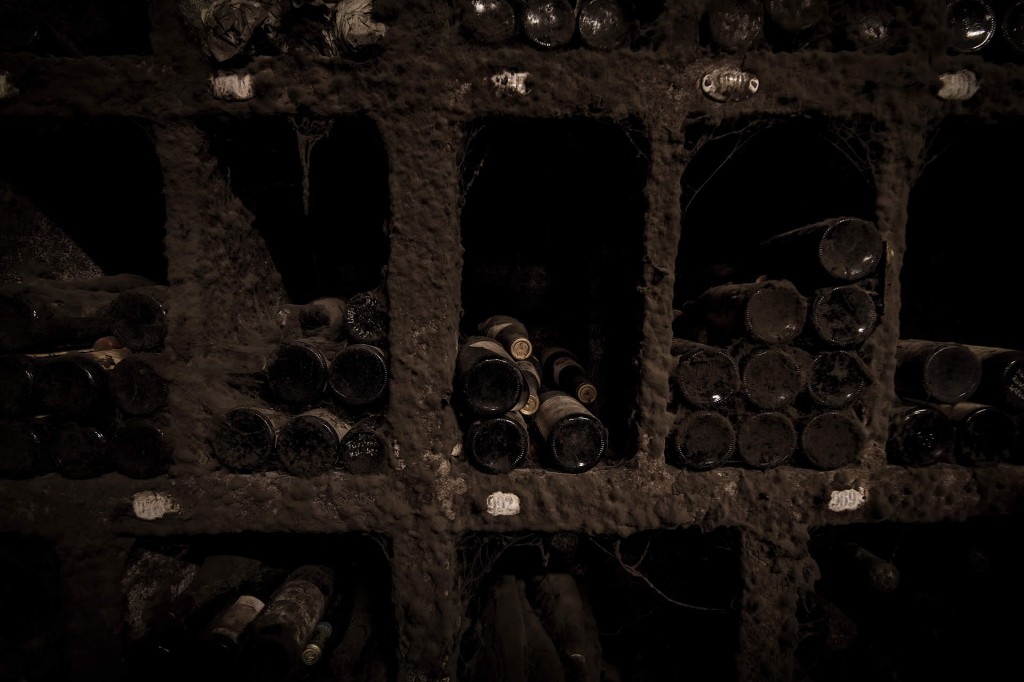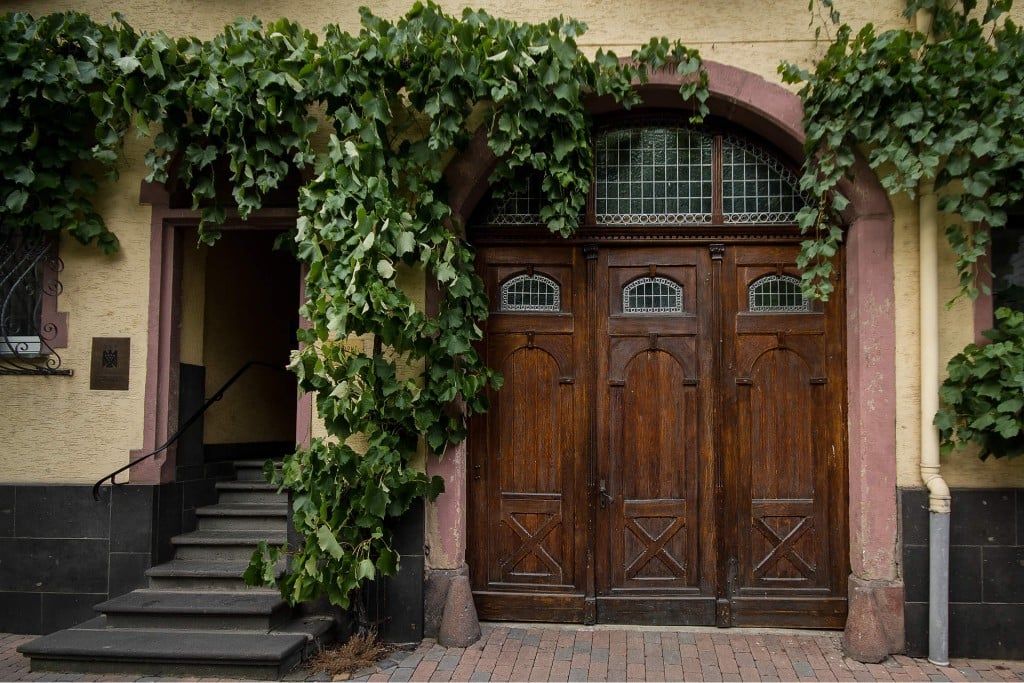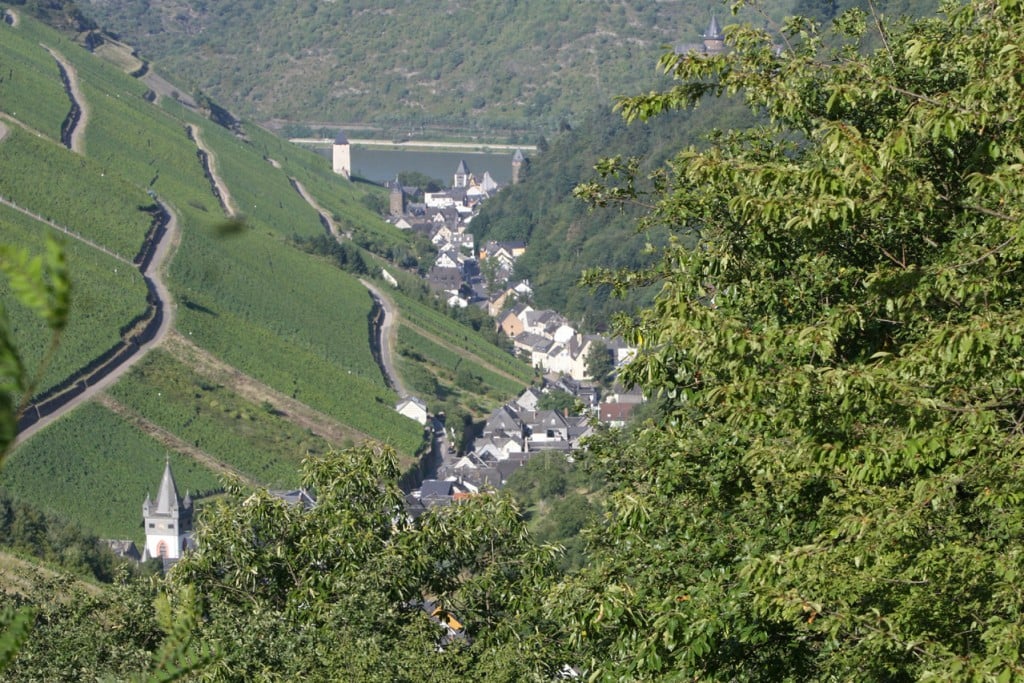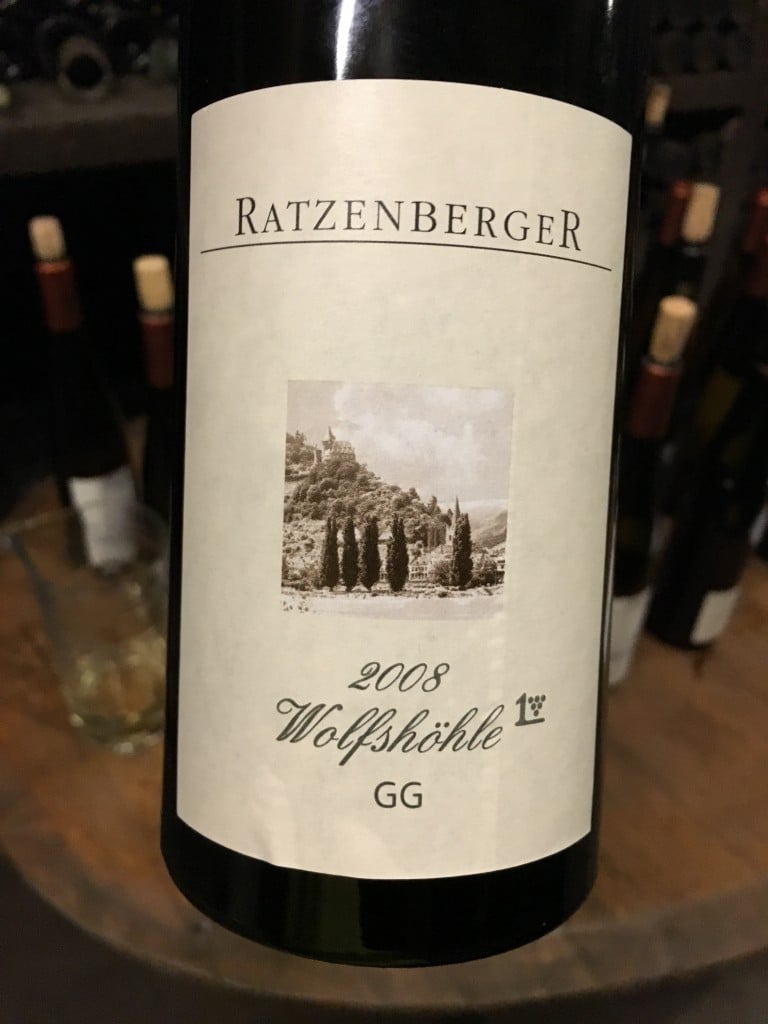Part I – Bacharach and a small piece of Sicily.
The middle valley of the Rhine is an area at the limit of survival for the vine. Riesling, the German grape variety which is at home here, reigns sovereign in this 80 mile (130 kilometer) stretch which flows northwards from the south. Pinot Noir also has a timid and tentative presence on these same soils, almost as though to remind us of what it might be able to do if it wished to and that this is a tough zone to operate in.
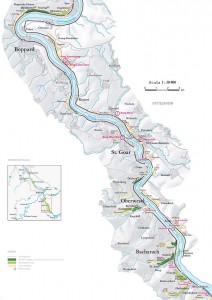 The city of Koblenz is right in the middle. Traces of its existence go all the way back to 1.000 years B.C, but its luminous existence began during the epoch of Julius Caesar. Its Latin name was “Confluentes” (confluence) due to its geographical position right at the point where the Rhine and the Moselle flow together.
The city of Koblenz is right in the middle. Traces of its existence go all the way back to 1.000 years B.C, but its luminous existence began during the epoch of Julius Caesar. Its Latin name was “Confluentes” (confluence) due to its geographical position right at the point where the Rhine and the Moselle flow together.
My passion for the Riesling and for Germany probed, over the years, these two rivers but in other and more celebrated parts of their course. A distraction for which I found the remedy this summer. Intense days which allowed me to view the sites, verify their DNA, and taste some of the most subtle and savory wines in all of Germany.
To properly position these wines, we can say, simplifying, that they are a bit richer than those of the Moselle and more elegant than those of the Rheingau (the stretch of the river between Wiesbaden and Rüdesheim, created as a district, or so the legend goes, by an act of Charlemagne). The notes of peach and fruit are balanced by a crisp and elegant freshness and by a suppleness and a caressing concentration when harvested with “noble rot”. But there has never been a large production of wines which carry the name “Mittlerhein” (i.e. mid-Rhine) as their appellation. The vineyards are almost entirely located either on terraces or on steep slopes, a limirting factor. To this must be added the presence in Koblenz of a large-scale producer of sparkling wine which cleans out the production of many a small cultivator.
 I have further divided the valley into three sub-zones on the basis of qualities and characteristics found in the wine themselves. The townships and the cru vineyards of Bacharach (1) and of Boppard (2), situated between Bingen and Kolbenz were, for me, the most interesting. It is a quite fascinating stretch of the river, known as well by the name of “the Rhine Gorge”, one sprinkled with medieval fortresses, some of which can be visited; since 2012, by a UNESCO decision, it is to be considered part of the patrimony of humanity for historic, geological, and cultural reasons. The stones which characterize its soil are known as “facies”, a type of sedimentary rock composed of slate and rich in fossils..
I have further divided the valley into three sub-zones on the basis of qualities and characteristics found in the wine themselves. The townships and the cru vineyards of Bacharach (1) and of Boppard (2), situated between Bingen and Kolbenz were, for me, the most interesting. It is a quite fascinating stretch of the river, known as well by the name of “the Rhine Gorge”, one sprinkled with medieval fortresses, some of which can be visited; since 2012, by a UNESCO decision, it is to be considered part of the patrimony of humanity for historic, geological, and cultural reasons. The stones which characterize its soil are known as “facies”, a type of sedimentary rock composed of slate and rich in fossils..
The gorge, narrow and deep, has a difference of altitude level which can amount to as much as 825 feet (250 meters), one creates a special micro-climate accentuated by the terraces which men have constructed over the ages. It is no surprise that a setting of this type – a combination of forest, rocks, fortresses, water, and mysterious rapids – generated the myth of Lorelei and inspired Richard Wager in the composition of his “Ring of the Nibelungen” cycle.
The third sector, instead, is to the north of Koblenz near the township of Leutersdorf. I will further investigate it in a future visit.
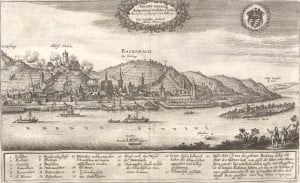 Bacharach-Merian: there are five producers whom I had the pleasure to visit – Toni Jost, Ratzenberger, Bastian, and Lennard in Bacharach, the last of whom is linked by a curious story to Sicily; and Matthias Müller in Boppard. Plus a wildcard: Kruger-Rumpf, a producer in the Nahe appellation located just behind the Rhine Gorge near Bingen.
Bacharach-Merian: there are five producers whom I had the pleasure to visit – Toni Jost, Ratzenberger, Bastian, and Lennard in Bacharach, the last of whom is linked by a curious story to Sicily; and Matthias Müller in Boppard. Plus a wildcard: Kruger-Rumpf, a producer in the Nahe appellation located just behind the Rhine Gorge near Bingen.
Before offering a report on these producers, it is worth the trouble to point out that the wines I tasted were from the 2015 vintage and tasted therefore in advance of commercial release, accordingly never commented in any wine journal or publication. I am convinced that it was a high level vintage, better than the two previous ones. The high temperatures and low rainfall were of great advantage for these areas – the mid-Rhine, the Moselle, and Nahe – and I can foresee an excellent evolution over time for their wines. Above and beyond this, the low rainfall elped to maintain an excellent state of health in the crop. The wines are, on average, quite clean and free of defects.
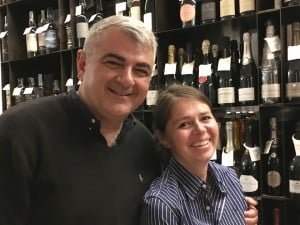 I begin precisely at Lennard, the place which sparked my interest in the mid-Rhine. The Sicilian Connection, yes indeed. Melanie Kneip, the owner who also runs the cellars, divides her time between the Rhine, Caltanisetta, and Noto together with her companion, Lorenzo Naro, he himself with a nice winery (NaroNero) in his portfolio. An attractive tangle of wines, places, and words. To return to the Rhine: the project is of recent origin, the acquisition in Bacharach is intended to give new visibility and luster to an historic cellar located in Steeg, part of the township. The cellars are quite large compared to the vineyard surface, and the buildings are currently being restructured and reorganized. The vineyards lie within one of the classic crus of the township, “Steeg Sankt Jost”. The vineyard itself is at a high altitude and is situated in a lateral valley near Steeg, which is situated perpendicularly in relation to the Rhine, which flows northwards from the south. Here the position is perfect – it faces fully southwards. The grade of steepness is approximately 70% and this increases the quantity and quality of sunlight which the vines capture. The castle of Burg Stahleck has its own fascination and it can be reached and visited by a fifteen minute walk through the woods.
I begin precisely at Lennard, the place which sparked my interest in the mid-Rhine. The Sicilian Connection, yes indeed. Melanie Kneip, the owner who also runs the cellars, divides her time between the Rhine, Caltanisetta, and Noto together with her companion, Lorenzo Naro, he himself with a nice winery (NaroNero) in his portfolio. An attractive tangle of wines, places, and words. To return to the Rhine: the project is of recent origin, the acquisition in Bacharach is intended to give new visibility and luster to an historic cellar located in Steeg, part of the township. The cellars are quite large compared to the vineyard surface, and the buildings are currently being restructured and reorganized. The vineyards lie within one of the classic crus of the township, “Steeg Sankt Jost”. The vineyard itself is at a high altitude and is situated in a lateral valley near Steeg, which is situated perpendicularly in relation to the Rhine, which flows northwards from the south. Here the position is perfect – it faces fully southwards. The grade of steepness is approximately 70% and this increases the quantity and quality of sunlight which the vines capture. The castle of Burg Stahleck has its own fascination and it can be reached and visited by a fifteen minute walk through the woods.
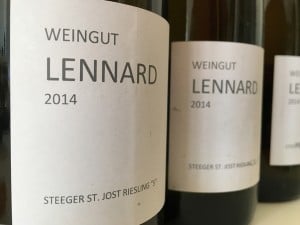 Three diffenent wines are produced from either Riesling or Pinot Noir. We offer two here: the 2014 Bacharach Riesling. An entry level wine which, so to speak, carries the township name. It is a wine with few secrets, slightly acid and with the attractive fragrance typical of Riesling. The price is €11. Then a selection from the cru, the Steeger St. Jost Riesling “S” 2014 – the “s” indicates a selection – produced from perfectly ripe grapes and which is perhaps something more, a late harvest wine. Precise and unmistakable the fruity aromas of the wine, principally peaches and grapefruit, made more subtle by floral notes. Light sensations of spices and ginger can be perceived as well. The play between mineral character, a bracing acidity, and ten or so grams of residual sugar is the most winning aspect of the wine. The overall sensation is that of a dry wine, but the elegant texture and the tactile softness are nonetheless quite evident. On the close, the drinking pleasure and the length of the finish and aftertaste, with peaches constantly front and center, are very impressive. You can make it yours for €18.
Three diffenent wines are produced from either Riesling or Pinot Noir. We offer two here: the 2014 Bacharach Riesling. An entry level wine which, so to speak, carries the township name. It is a wine with few secrets, slightly acid and with the attractive fragrance typical of Riesling. The price is €11. Then a selection from the cru, the Steeger St. Jost Riesling “S” 2014 – the “s” indicates a selection – produced from perfectly ripe grapes and which is perhaps something more, a late harvest wine. Precise and unmistakable the fruity aromas of the wine, principally peaches and grapefruit, made more subtle by floral notes. Light sensations of spices and ginger can be perceived as well. The play between mineral character, a bracing acidity, and ten or so grams of residual sugar is the most winning aspect of the wine. The overall sensation is that of a dry wine, but the elegant texture and the tactile softness are nonetheless quite evident. On the close, the drinking pleasure and the length of the finish and aftertaste, with peaches constantly front and center, are very impressive. You can make it yours for €18.
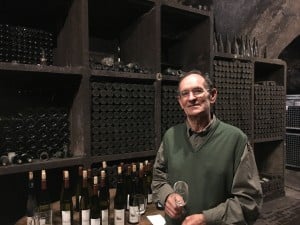 Ratzenberger is just a hop, step, and jump from Lennard. Jochen senior and Jochen Junior, father and son, have long been producers of wine, little known outside of Germany but well quoted abroad, above all in the United States and Japan. The 35 acres (14 hectares) of vineyards are principally in Steeg; the “Bacharacher Posten” cru is a lovely and interesting vineyard which takes its name from a lookout tower. “Bacharacher Wolfshöhle” and “Bacharacher Kloster Fürstental” are other important vineyards. The production is a very varied one and ranges over thirty different wines, just a few bottles each, divided between the dry, the sweet, and Pinot Noir. Father Jochen receives me at his home – a simple and comfortable one – and we than taste in cellars amidst the bottles. Many are from old vintages. His fluent patter, delivered with the verve of a politician, together with his abilities as a speaker at sommelier’s school in Germany, guide me unerringly thorough the forest of bottles in front of us. We leave aside the Brut produced from Pinot Noir, a highly appreciated bottle, perhaps among the finest of the Rhine and one which, year after year, most impresses critics. But this is not the purpose of this visit.
Ratzenberger is just a hop, step, and jump from Lennard. Jochen senior and Jochen Junior, father and son, have long been producers of wine, little known outside of Germany but well quoted abroad, above all in the United States and Japan. The 35 acres (14 hectares) of vineyards are principally in Steeg; the “Bacharacher Posten” cru is a lovely and interesting vineyard which takes its name from a lookout tower. “Bacharacher Wolfshöhle” and “Bacharacher Kloster Fürstental” are other important vineyards. The production is a very varied one and ranges over thirty different wines, just a few bottles each, divided between the dry, the sweet, and Pinot Noir. Father Jochen receives me at his home – a simple and comfortable one – and we than taste in cellars amidst the bottles. Many are from old vintages. His fluent patter, delivered with the verve of a politician, together with his abilities as a speaker at sommelier’s school in Germany, guide me unerringly thorough the forest of bottles in front of us. We leave aside the Brut produced from Pinot Noir, a highly appreciated bottle, perhaps among the finest of the Rhine and one which, year after year, most impresses critics. But this is not the purpose of this visit.
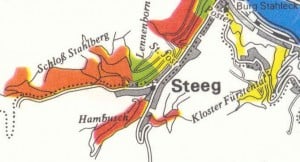 Our attention first goes to a dry wine, the GG Wolfshöhle (GG stands for Grosses Gewächs, or dry Gran Cru according to the classification of the association of producers of high quality, or VDP, wine – to be consulted here) with three vintages offered, the 2011, the 2008, and the 2005. The tasting answers many questions and shows clearly the cool and crisp style of the wine, at least in its youth, then warmer when it reaches a certain age, with its notes of white fruit, peaches, and honey given further vigor with sensations of mint, medicinal herbs, and a prominent smoky vein probably the result of wood aging. An exceptionally mineral wine; time seems to have pushed this characteristic all the way to its extreme limits, touched in 2005. But if this is considered the finest wines of the house in terms of the dry category with its price of approximately €26 at the cellar, I find much more to my liking softer versions from late-harvest grapes, ones at times, with “noble rot”. The 2011 Bacharacher Posten Riesling Spätlese halbtrocken with around 15 grams of residual sugar is very fine indeed. Though dry on the palate with its 11° of alcohol, it rapidly reaches the heights. Its fresh fragrance is that of a warm and sunny spring day in the mountains and the wine can be purchased at the incredibly reasonable price of €12 per bottle.
Our attention first goes to a dry wine, the GG Wolfshöhle (GG stands for Grosses Gewächs, or dry Gran Cru according to the classification of the association of producers of high quality, or VDP, wine – to be consulted here) with three vintages offered, the 2011, the 2008, and the 2005. The tasting answers many questions and shows clearly the cool and crisp style of the wine, at least in its youth, then warmer when it reaches a certain age, with its notes of white fruit, peaches, and honey given further vigor with sensations of mint, medicinal herbs, and a prominent smoky vein probably the result of wood aging. An exceptionally mineral wine; time seems to have pushed this characteristic all the way to its extreme limits, touched in 2005. But if this is considered the finest wines of the house in terms of the dry category with its price of approximately €26 at the cellar, I find much more to my liking softer versions from late-harvest grapes, ones at times, with “noble rot”. The 2011 Bacharacher Posten Riesling Spätlese halbtrocken with around 15 grams of residual sugar is very fine indeed. Though dry on the palate with its 11° of alcohol, it rapidly reaches the heights. Its fresh fragrance is that of a warm and sunny spring day in the mountains and the wine can be purchased at the incredibly reasonable price of €12 per bottle.
Steeg-vigna: another story altogether for the late-harvest wine from the same cru, the 2003 Bacharacher Wolfshöhle Riesling Auslese. Long and feather light with its 8° of alcohol, it integrates with complete success sweetness and acidity, underlining more than any other wine the grey slate of the vineyard soil. I find once again in its bouquet spice, peaches, and quinces and, more in general, that fruitiness very far removed indeed(!) from the celebrated notes of petroleum. I shall wait … To conclude, I signal to those who should visit the cellars in the future the highly interesting examples of Beerenauslese (selections from “acini nobili”) and Eiswein (made from frozen berries) at very competitive prices indeed, 30 to 40 euro the half bottle.
Note: both Lennard and Ratzenberger offer hospitality in small apartments.
To be continued – in the second part Bastian, Kruger-Rumpf, Matthias Müller, and restaurants.
Weingut Lennard
55422 Bacharach
E-Mail: info@weingutlennard.com
http://www.weingutlennard.com
Weingut Ratzenberger
Blücherstr. 167
55422 Bacharach
Tel. (06743) 1337
E-Mail: weingut-ratzenberger@t-online.de
http://www.weingut-ratzenberger.de
- La fortezza di Burg Pfalzgrafenstein
- Reno
- Bacharach
- Bacharach
- Bacharach: la Wernerkapelle vista dal cortile del Posthof
- Reno
- Bacharach
- Coblenza nel punto di confluenza del Reno con il fiume Mosella
- frazione di Steeg presso Bacharach
- mappa del Medio Reno (Mittelrhein)
- Lorenzo Naro e Melanie Kneip
- i vini di Lennard
- Vigneti visti dalla cantina Lennard
- terroir: l’ardesia di Steeg
- terroir: l’ardesia di Steeg
- terroir: l’ardesia di Steeg
- Jochen Ratzenberger
- Jochen Ratzenberger
- particolare della chiesa di Bacharach
- la Germania del vino
- Il castello di Ehrenburg
- Il castello di Burg Reichenstein
- Il castello di Burg Reichenstein
- Ratzenberger – Bacharacher Wolfshöhle 2005
- Ratzenberger – Bachbracher Posten Riesling Spätlese halbtrocken 2015
- Ratzenberger – Bacharacher Wolfshöhle Riesling Auslese 2003
- Bacharach vista dal Reno. Sulla destra la Torre della Guardia (il Bacharacher Posten)
- degustazione con Jochen Ratzenberger
- vigneti a Bacharach
- cantina Ratzenberger
- cantina Ratzenberger
- cantina Ratzenberger
- la casa/cantina Ratzenberger
- Vigneti a Steeg. In fondo il Reno
- il Gran Cru di Bacharach (GG) Wolfshöhle 2008, uno splendido Riesling secco e minerale




